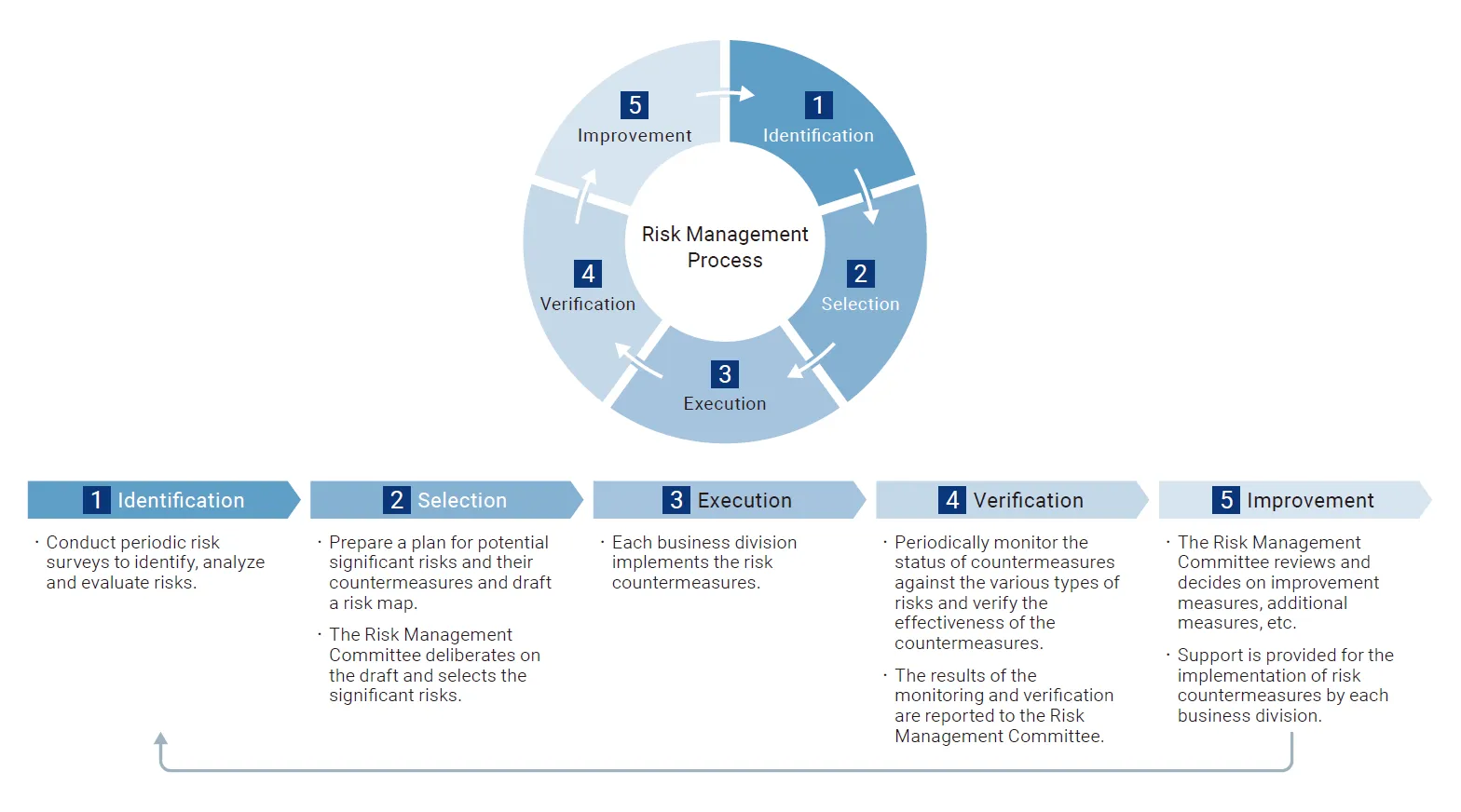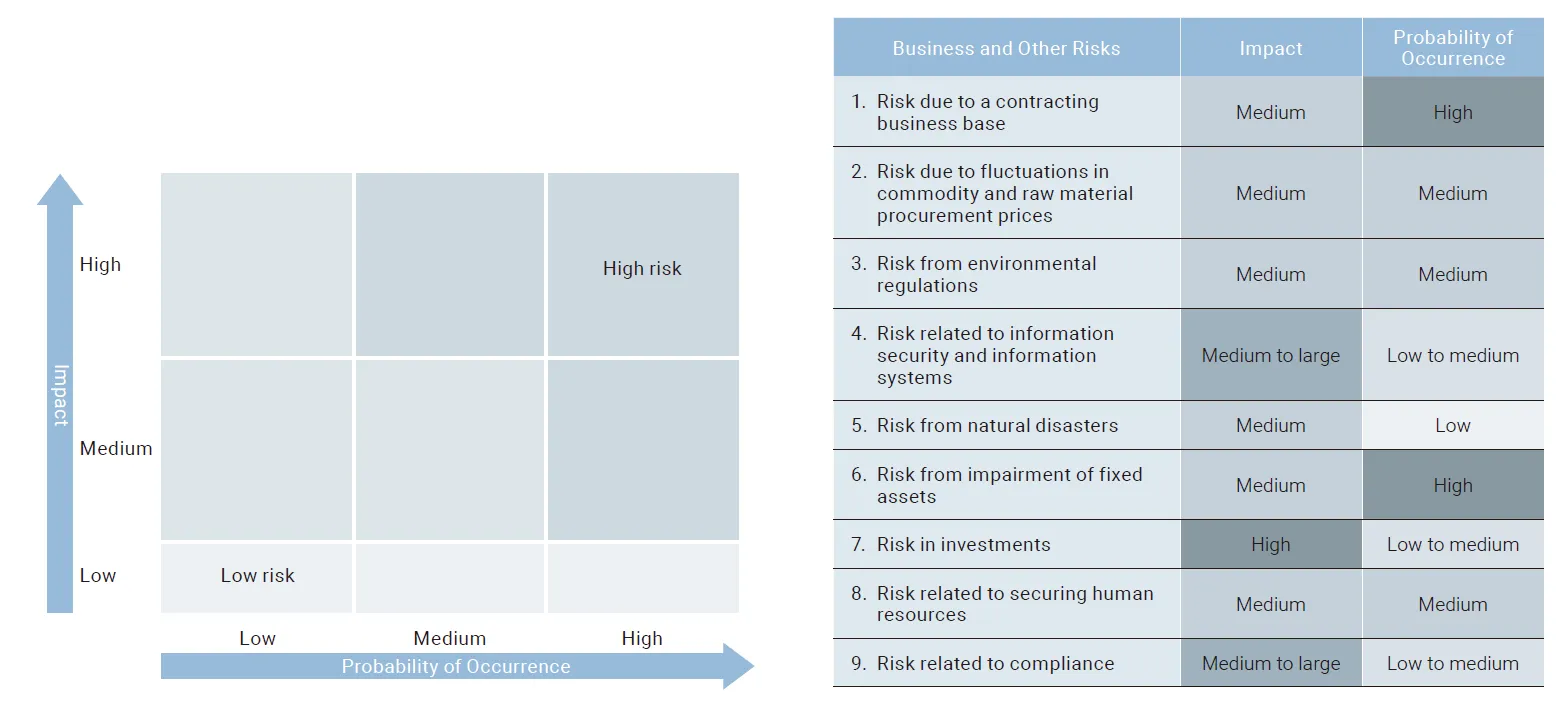- Home
- Sustainability
- Governance
- Risk Management
Risk Management
● Basic Policy
Basic Risk Management Policy
The ITOCHU ENEX Group’s businesses entail many different risks which may impact the Group over the short, medium or long term.
We are properly managing these risks by establishing a structure for implementing the following plans and taking related measures.
- Staying up to date on important risks that may affect our management of our business and discussing, implementing and monitoring measures to address these risks
- Having a risk management committee that functions as an advisory body regarding the management of business, establishing an organization that is in charge of the handling of risks on a company-wide level and creating and improving related rules and regulations
- Formulating a business continuity plan to prepare for serious natural disasters and accidents, and educating and training officers and employees
● Various Systems and Initiatives
・ Risk management system
In order to respond to the various risks surrounding the Group, the Group manages risks comprehensively and individually by developing management systems and methods. In 2024, we established the Risk Management Section as an organization to oversee and manage risk in the Group. In addition, the Risk Management Committee has been established as an advisory body to management and conducts risk management by identifying and analyzing risks that could have a material impact on management, implementing countermeasures, preventing the occurrence and materialization of risks and promoting risk awareness, while continuing strengthening management.
・ Risk management method
Risk Management Process
Risk Map
In selecting the significant risks, the various risks are evaluated based on the two axes of impact and probability of occurrence.
・ Systems for Handling Emergencies
The Company has established reporting routes that enable it to quickly obtain accurate information and respond appropriately when an accident occurs or a risk arises in the Group. The Company has also developed an emergency contact network that systematically connects Group companies, business divisions, and officers (including the President & CEO), so that when an earthquake, typhoon, heavy rain, or other natural disaster occurs, it will be able to quickly confirm the safety of Group personnel, ascertain the level of damage to the Group’s facilities and clients, and secure essential services. In FY2024, the Company issued a drill alarm regularly to foster employees' awareness of disaster prevention and prepare for contingencies.
・ Fire and Disaster Prevention/Business Continuity Plan (BCP)
The Company has formulated a business continuity plan (BCP) as a precaution against possible major natural disasters. The “BCP and Disaster Response Headquarters”, which is the core organization of this plan, consists of the President and Chief Executive Officer (Director of the Disaster Response Headquarters), heads of departments, and general managers. In the event of a large-scale disaster, the Headquarters leads Group-wide activities to respond to the situation based on a plan that lays out the people in the chain of command and how to respond to specific circumstances. In addition, the Company has in place a backup system to transfer the head office functions to Fukuoka and Hiroshima. Since FY2022, first aid training has been conducted at the head office and in each area, and as of March 31, 2025, a total of 600 Group employees have obtained lifesaving skills certificates. Further, we are working to improve the effectiveness of our BCP, including training linked to our alternative centers of operation and training for personnel in charge of continuing and promoting BCM (Business Continuity Management) operations.
・ Basic Policy for Information Management of the Group
The Group recognize appropriate management of information as an important business issue, and while protecting information assets from various threats surrounding the Group, maintains and improves Group information management systems via appropriate handling of information assets.


